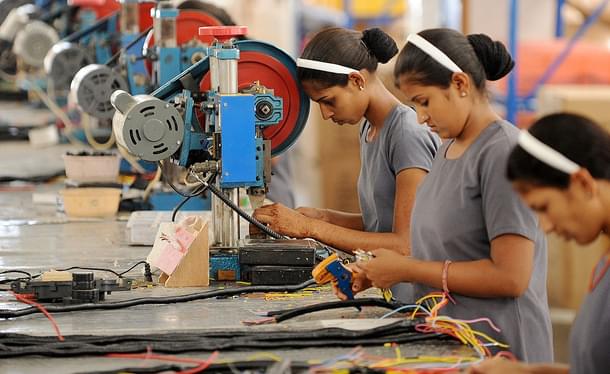Economy
IIP Is Not A True Indicator Of Industry’s Performance. Here’s Why
Swarajya Staff
Sep 16, 2016, 02:11 PM | Updated 02:11 PM IST
Save & read from anywhere!
Bookmark stories for easy access on any device or the Swarajya app.


The Index Of Industrial Production (IIP) tells us the performance of the industry. It measures changes in the quantities of a specified set of manufactured, mining and electricity products over a certain period of time.
But recently, the index has come under close scrutiny from the market watchers as many believe that this is no longer a reliable indicator of the growth of manufacturing in the country.
Why so?
Aarati Krishnan writes in the Business Line (BL) today (16 September) detailing all that’s wrong with the IIP.
Consider the latest IIP numbers: It shows that industrial production saw a decline of 2.4 percent in July (compared to the year before). It had shown a growth of two percent in June. This fluctuation is not an exception but the norm.
Why? The devil is in details. Krishnan points out that while the output of rubber insulated cables, marble tiles/slabs, HR sheets, and sugar machinery declined by 91, 62, 59 and 53 percent respectively, that of room air-conditioners, wood furniture, ready-to-eat, and colour TV sets grew by 103, 74, 65, and 29 percent respectively.
If statisticians were to ignore the cables, IIP would have grown by two percent, same as in June. Krishnan writes that rubber insulated cables are proving to be a big drag on the overall index.
However, the issues with the IIP don’t end here. Krishnan lists out three main problems with the current index.
The first problem, Krishnan says, is that the IIP series continues to use 2004-05 as its base year even as other macro indicators such as the new GDP series and Consumer Price Index have already moved on to 2011-12.
What it basically means is that we are still relying on the goods that drove the industry in 2004-05 to capture growth at present.
“While the present-day IIP may capture every small blip in the output of colour picture tube television sets, stereo systems, compact discs, radios, feature phones or desktop PCs, it wouldn’t pay any attention to the burgeoning output of LCD or LED TVs, MP3 players, smartphones or notebook computers,” Krishnan explains.
The second problem is that the data that is used to prepare the IIP series is itself not reliable. There are 682 products that contribute to the series. There are 16 source agencies that report the data about these products. However, they hardly take the exercise seriously and more often than not, skip this exercise.
To make up for this, either last month’s or three-month average is taken to calculate the series. No wonder then we end up with an erratic IIP.
The third problem is the flawed data capture. Krishnan points out that in the last six months, the IIP has shown between a 9 and 29 percent contraction in capital goods output.
Krishnan gives an explanation for such wild swings. She writes that some types of capital equipment have a production cycle that lasts far beyond a month. Hence, ‘their output may go from nil for several months to a 100 in a single month.’
How can we correct this? Capture the progress of such equipment every month, suggests Krishnan.





